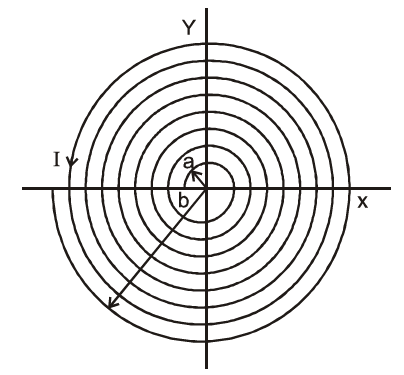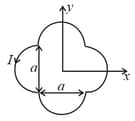Embibe Experts Solutions for Chapter: Magnetic Effect of Current, Exercise 3: Exercise - 3
Embibe Experts Physics Solutions for Exercise - Embibe Experts Solutions for Chapter: Magnetic Effect of Current, Exercise 3: Exercise - 3
Attempt the free practice questions on Chapter 25: Magnetic Effect of Current, Exercise 3: Exercise - 3 with hints and solutions to strengthen your understanding. Alpha Question Bank for Engineering: Physics solutions are prepared by Experienced Embibe Experts.
Questions from Embibe Experts Solutions for Chapter: Magnetic Effect of Current, Exercise 3: Exercise - 3 with Hints & Solutions
An electron and a proton are moving on straight parallel paths with same velocity. They enter a semi-infinite region of uniform magnetic field perpendicular to the velocity. Which of the following statement (s) is/are true ?
A long insulated copper wire is closely wound as a spiral of turns. The spiral has inner radius and outer radius. The spiral lies in the X-Y plane and a steady current I flows through the wire. The Z component of the magnetic field at the center of the spiral is

A loop carrying current I lies in the x-y plane as shown in the figure. the unit vector is coming out of the plane of the paper. the magnetic moment of the current loop is :

An infinitely long hollow conducting cylinder with inner radius and outer radius R carries a uniform current density along is length. The magnitude of the magnetic field, as a function of the radial distance r from the axis is best represented by :
A particle of mass and positive charge , moving with a constant velocity , enters a region of uniform static magnetic field, normal to the plane. The region of the magnetic field extends from to for all values of . After passing through this region, the particle emerges on the other side after milliseconds with a velocity . The correct statement(s) is (are)
A long straight wire of radius carries steady current The current is uniformly distributed across its cross-section. The ratio of the magnetic field at and is
A current I flows along the length of an infinitely long, straight thin walled pipe. Then
A charged particle with charge enters a region of constant uniform and mutually orthogonal fields and with a velocity perpendicular to both and and comes out without any change in magnitude or direction of . Then
